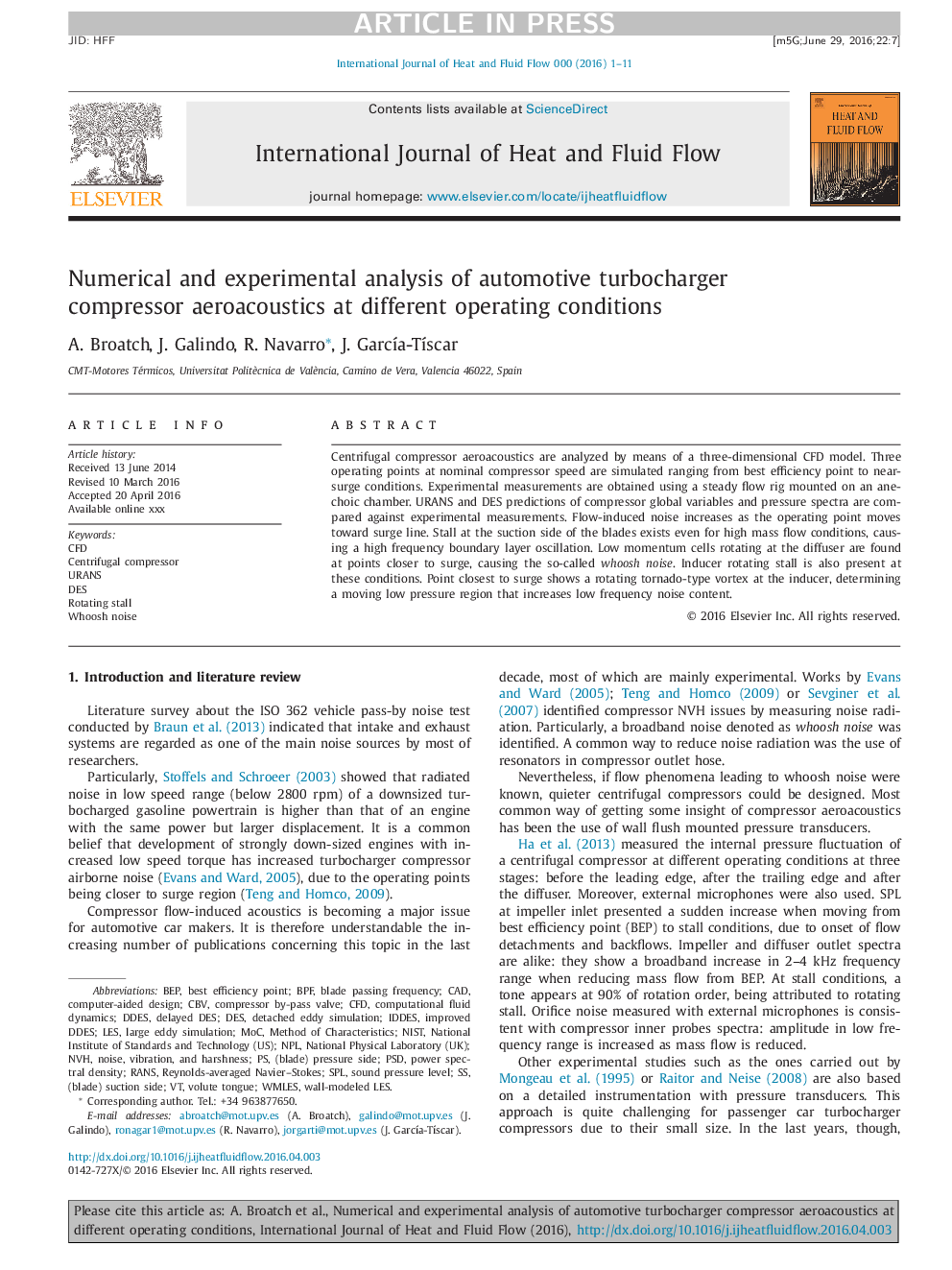| Article ID | Journal | Published Year | Pages | File Type |
|---|---|---|---|---|
| 4993334 | International Journal of Heat and Fluid Flow | 2016 | 11 Pages |
Abstract
Centrifugal compressor aeroacoustics are analyzed by means of a three-dimensional CFD model. Three operating points at nominal compressor speed are simulated ranging from best efficiency point to near-surge conditions. Experimental measurements are obtained using a steady flow rig mounted on an anechoic chamber. URANS and DES predictions of compressor global variables and pressure spectra are compared against experimental measurements. Flow-induced noise increases as the operating point moves toward surge line. Stall at the suction side of the blades exists even for high mass flow conditions, causing a high frequency boundary layer oscillation. Low momentum cells rotating at the diffuser are found at points closer to surge, causing the so-called whoosh noise. Inducer rotating stall is also present at these conditions. Point closest to surge shows a rotating tornado-type vortex at the inducer, determining a moving low pressure region that increases low frequency noise content.
Keywords
Blade passing frequencyNPLWMLESLESIDDESNVHURANSDDESNISTBPFPSDSPLCBVMOCBEPDESBest efficiency pointPower spectral densityCFDComputational fluid dynamicsRANSMethod of characteristicsReynolds-averaged Navier–StokesSound pressure levelLarge Eddy SimulationDetached eddy simulationCADComputer-aided designrotating stallCentrifugal compressor
Related Topics
Physical Sciences and Engineering
Chemical Engineering
Fluid Flow and Transfer Processes
Authors
A. Broatch, J. Galindo, R. Navarro, J. GarcÃa-TÃscar,
